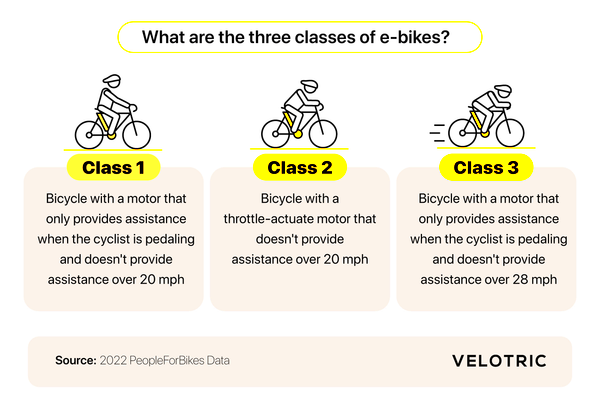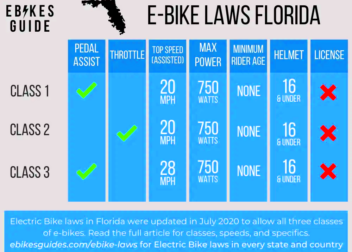Class 2 Electric Bike Laws and Riding Guidelines in Your State
Class 2 electric bikes are gaining popularity as a fun and eco-friendly way to commute and enjoy outdoor activities. These bikes come with a pedal-assist feature that provides a boost when needed, making cycling accessible for everyone. In this post, we’ll explore what Class 2 electric bikes are, the laws that govern them, and the riding guidelines specific to your state.
Understanding Class 2 Electric Bikes Definition
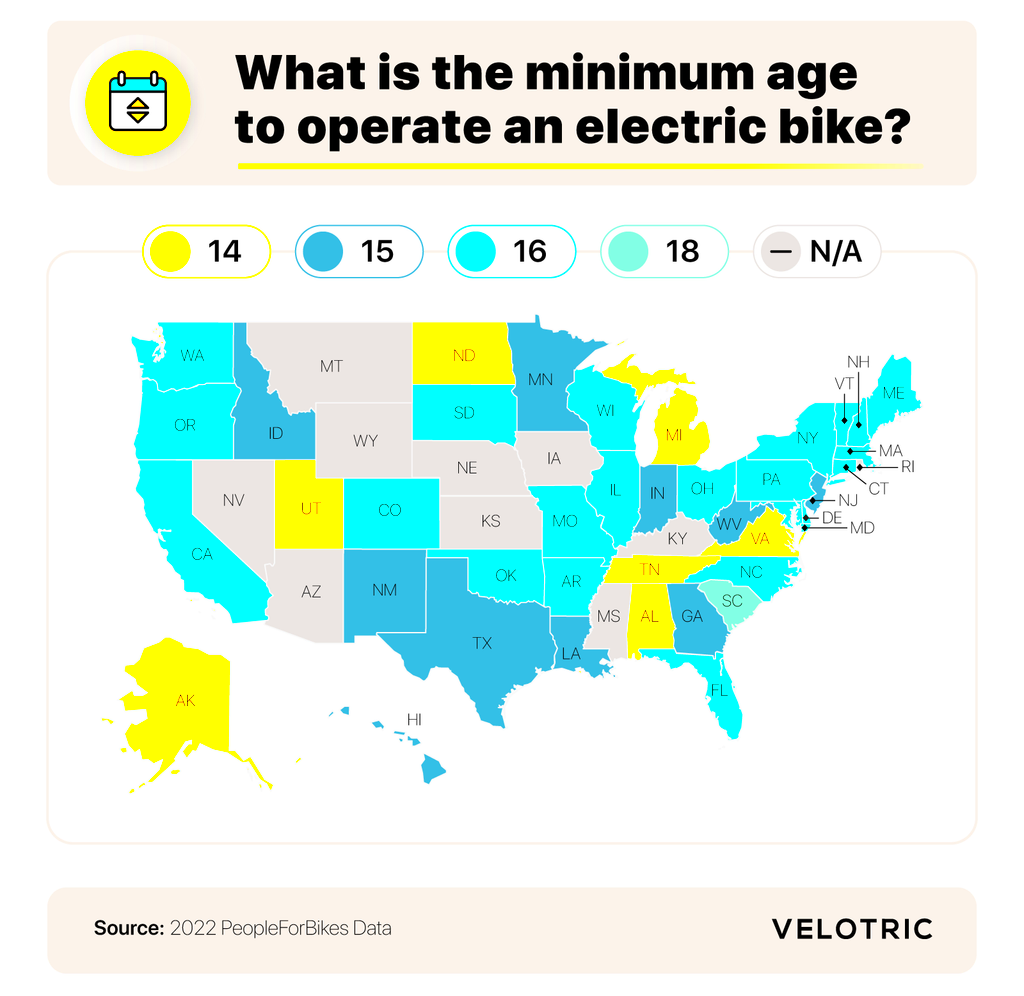
Class 2 electric bikes are defined by their specific characteristics and features. Here’s a breakdown:
- Pedal Assist: Class 2 bikes can assist the rider with an electric motor that engages when pedaling.
- Throttle Control: Unlike Class 1 bikes, Class 2 bikes can also be operated solely using a throttle, allowing the rider to engage the motor without pedaling.
- Speed Limit: These bikes typically have a maximum speed limit of 20 mph when the motor is engaged.
- Power Output: The electric motor should not exceed 750 watts (1 horsepower).
Understanding these definitions is crucial for riders to comply with local regulations and ensure safe riding practices.
State Regulations for Class 2 Electric Bikes
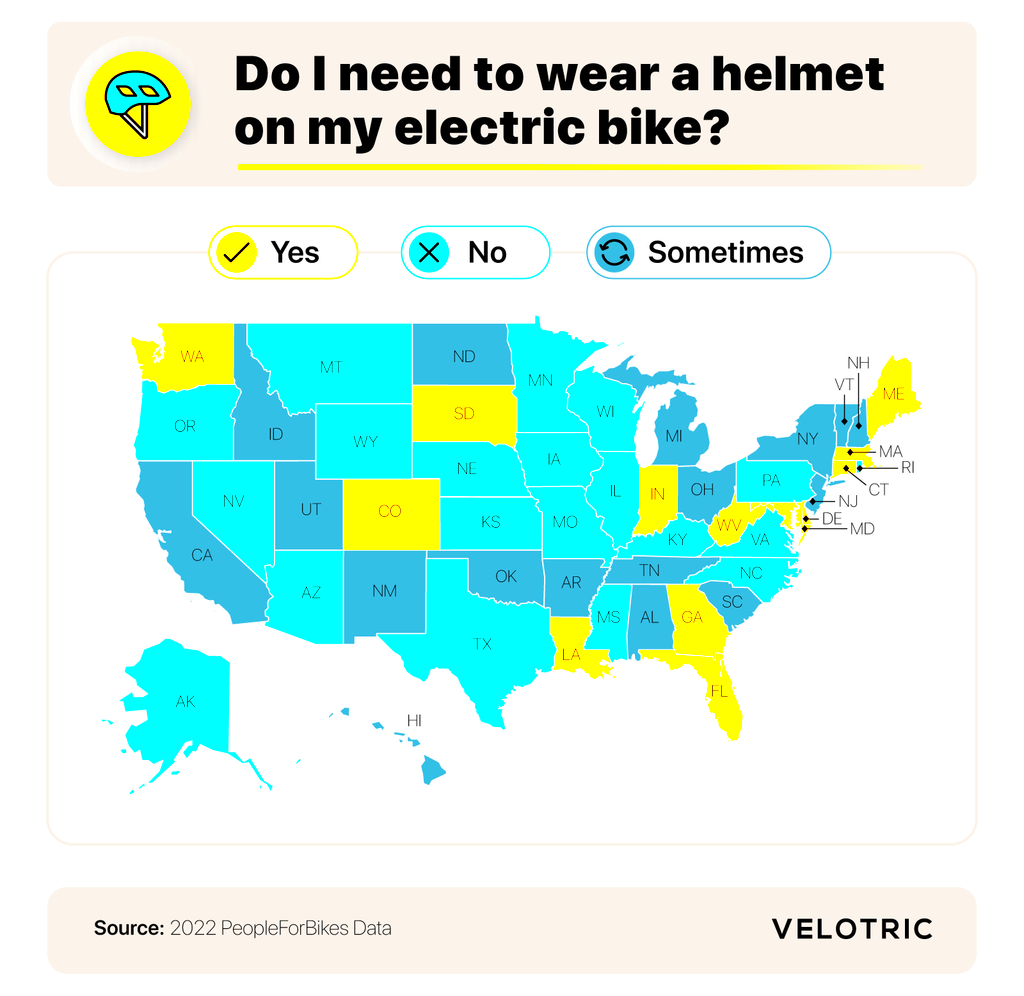
State regulations for Class 2 electric bikes vary significantly, impacting where and how you can ride. Here’s a general overview of common regulations:
| State | Helmet Requirement | Where to Ride | Registration Needed |
|---|---|---|---|
| California | Under 18 | Bike paths and streets | No |
| New York | Under 14 | Bike paths and streets | No |
| Texas | None | Bike paths and streets | No |
| Florida | Under 16 | Bike paths and streets | No |
Always check your local laws to stay informed about the specific regulations that apply to your area. Some states may also have additional rules regarding usage in parks or on public property.
Where You Can Ride Class 2 Electric Bikes
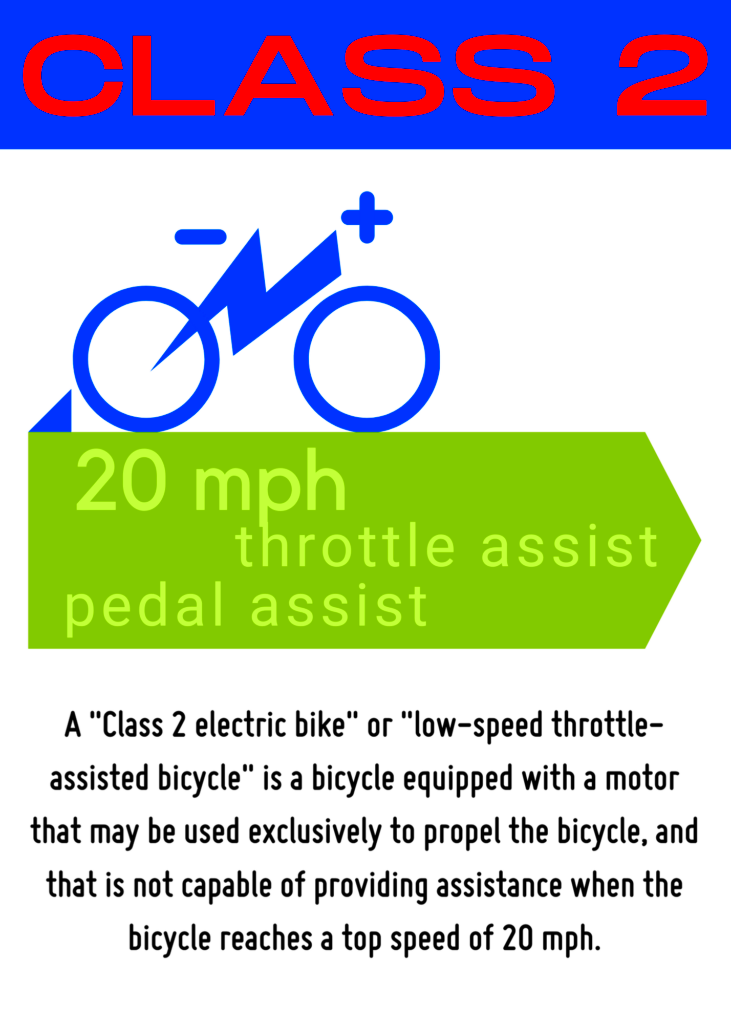
Knowing where you can ride your Class 2 electric bike is essential for a smooth and enjoyable experience. While many places welcome electric bikes, others have specific restrictions. Here’s a quick guide on where you can typically ride:
- Bicycle Paths: Most states allow Class 2 electric bikes on designated bike paths. These paths are usually safer and less congested, making them ideal for riding.
- Roadways: You can ride Class 2 bikes on many roadways, especially those with bike lanes. Just remember to follow traffic laws and signals.
- Parks: Many parks permit Class 2 electric bikes, but some may have restrictions. Always check the park’s rules before riding.
- Sidewalks: Riding on sidewalks can vary by state and city. In some places, it’s allowed for Class 2 bikes, while others may prohibit it. Always look for local regulations.
In short, check local laws and regulations to make sure you’re riding in a safe and legal area. Staying informed will help you enjoy your rides without any hassles!
Safety Guidelines for Riding Class 2 Electric Bikes
Riding a Class 2 electric bike can be a thrilling experience, but safety should always come first. Here are some key safety guidelines to keep in mind:
- Wear a Helmet: Always wear a properly fitting helmet. It’s one of the best ways to protect yourself in case of an accident.
- Check Your Bike: Before each ride, ensure your brakes, lights, and tires are in good condition. A quick inspection can prevent accidents.
- Follow Traffic Rules: Obey traffic signals and road signs. Treat your electric bike like any other vehicle on the road.
- Stay Visible: Use lights and reflectors, especially at night or in low-light conditions. Bright clothing can also help make you more visible to others.
- Avoid Distractions: Keep your focus on the road. Avoid using your phone or wearing headphones while riding.
By following these guidelines, you can enjoy your rides while minimizing risks and ensuring a safe experience.
Helmet Laws for Class 2 Electric Bike Riders
Helmet laws for Class 2 electric bike riders vary widely from state to state, and knowing these laws is crucial for staying compliant. Here’s what you need to know:
- Age Requirements: Many states require riders under a certain age to wear helmets. Commonly, this age is between 16 and 18. Always verify your state’s specific requirements.
- No Universal Law: There is no federal law mandating helmet use for electric bike riders, so each state sets its own rules.
- Local Ordinances: Some cities or counties may have stricter helmet laws. Make sure to check local regulations before you ride.
- Encouraged for All: Even if not legally required, wearing a helmet is highly recommended for all riders, regardless of age.
In summary, always wear a helmet to protect yourself, and make sure you’re aware of the helmet laws in your area to avoid any fines or legal issues. Staying safe is the most important thing!
Insurance Requirements for Class 2 Electric Bikes
When it comes to riding Class 2 electric bikes, understanding insurance requirements is key for both safety and legal compliance. While many states do not mandate insurance for electric bikes, having coverage can offer peace of mind and protection against unforeseen incidents. Here are some points to consider:
- State Regulations: Check your state’s specific requirements. Some states may require insurance for electric bikes classified under certain categories.
- Liability Coverage: Even if not required, consider getting liability coverage to protect yourself against claims from accidents involving other people or property.
- Property Damage: If your bike gets stolen or damaged, having insurance can help cover repair or replacement costs.
- Medical Coverage: Some policies may offer medical coverage for injuries sustained while riding. This can be beneficial in case of accidents.
In summary, while insurance for Class 2 electric bikes may not be legally required in all areas, it’s wise to consider it for financial protection and peace of mind while riding.
Tips for Choosing the Right Class 2 Electric Bike
Choosing the right Class 2 electric bike can make a huge difference in your riding experience. With so many options available, it can feel overwhelming. Here are some helpful tips to guide your decision:
- Understand Your Needs: Consider how you plan to use the bike. Will you be commuting, running errands, or enjoying leisurely rides? Knowing your purpose can narrow your choices.
- Test Ride: Whenever possible, take a test ride to get a feel for the bike. Pay attention to comfort, handling, and the ease of use of the pedal-assist feature.
- Battery Life: Look for a bike with a battery that suits your riding distance. Check the range and how long it takes to charge.
- Weight and Storage: Consider the bike’s weight, especially if you need to carry it or store it in small spaces. Lightweight models can be easier to manage.
- Reviews and Recommendations: Read reviews from other riders and ask friends for recommendations. Their experiences can provide valuable insights.
By keeping these tips in mind, you’ll be better equipped to choose a Class 2 electric bike that meets your needs and enhances your riding experience.
FAQs about Class 2 Electric Bike Laws
As electric bikes become more popular, many riders have questions about the laws surrounding them. Here are some frequently asked questions to help clarify common concerns:
- Are Class 2 electric bikes allowed on bike paths?
Yes, in most states, Class 2 electric bikes are allowed on designated bike paths. However, check local regulations to be sure. - Do I need a driver’s license to ride a Class 2 electric bike?
Generally, no driver’s license is required for riding Class 2 electric bikes, but some states may have specific rules. Always check your state laws. - Can I ride my Class 2 electric bike in the rain?
While many electric bikes are weather-resistant, it’s best to avoid heavy rain to protect the electrical components. - What happens if I break the speed limit?
Riders must obey speed limits, as violating traffic laws can result in fines or penalties, just like with traditional bicycles. - Can I modify my Class 2 electric bike?
Modifying your bike may affect its classification. Always check local regulations before making modifications to ensure compliance.
These FAQs should help clarify some common concerns about Class 2 electric bike laws. Always stay informed and ride safely!
Conclusion on Class 2 Electric Bike Regulations
In conclusion, understanding Class 2 electric bike regulations is crucial for ensuring a safe and enjoyable riding experience. From knowing where you can ride to familiarizing yourself with local helmet laws and insurance requirements, being informed helps you comply with the law and stay safe on the road. Each state has unique regulations, so it’s important to do your research before hitting the trails or the streets. By following safety guidelines, choosing the right bike, and staying aware of the laws, you can enjoy all the benefits that come with riding a Class 2 electric bike. Embrace the freedom of the ride while being a responsible and informed rider!
